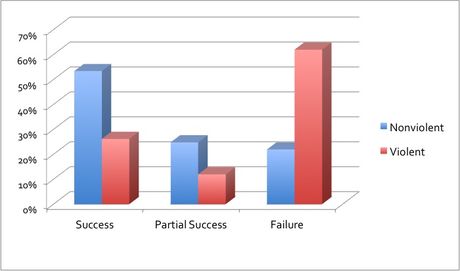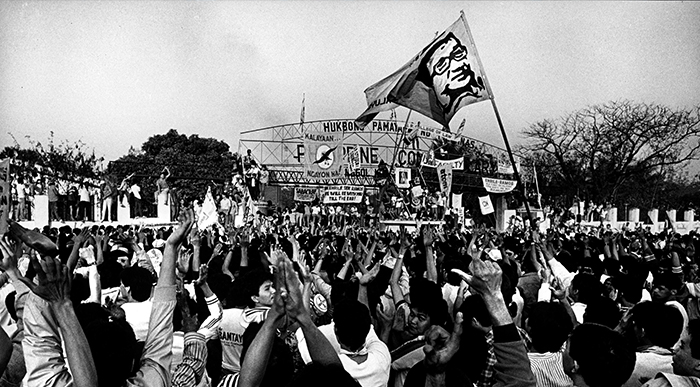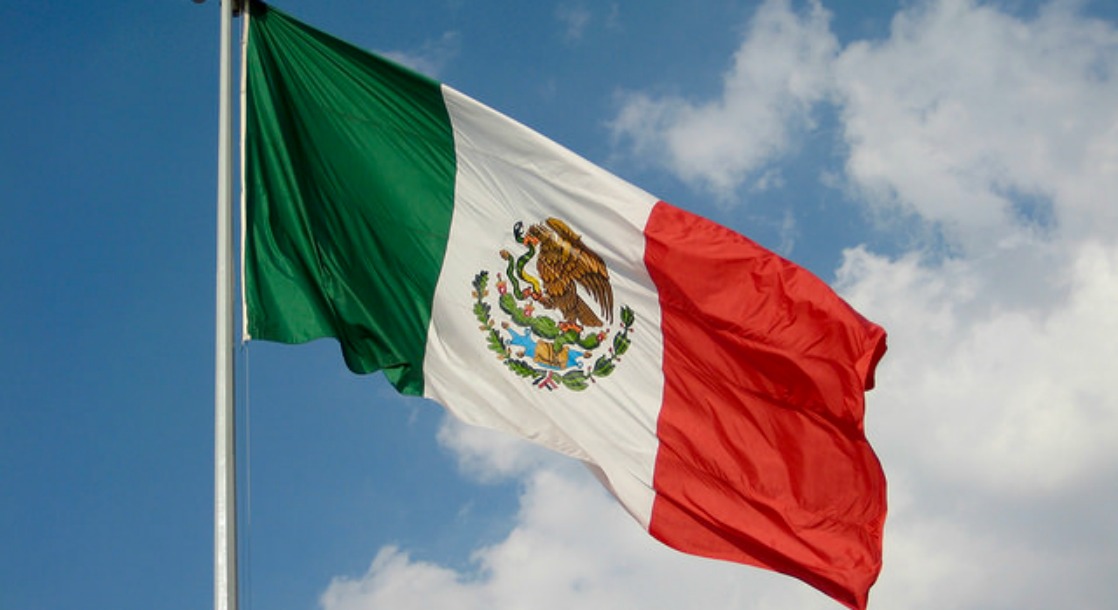When pondering what overthrowing a tyrannical government might be like, you may be picturing guns, bombs, people yelling, and generally terrifying mayhem. But what if the secret to taking down an oppressive regime is actually a combination of hand-holding, protest sign-waving, and political chanting?
A 2014 article from Psychology Today entitled “Violent Versus Nonviolent Revolutions: Which Way Wins?” describes how political scientists Erica Chenoweth and Maria Stephan collected data on 323 violent and nonviolent political campaigns occurring since 1900. When they started the project, they were sure that the violent campaigns would be the successful ones—because dudes with weapons always win, right? PSYCHE! The data showed that the nonviolent campaigns had a higher success rate than the violent ones. The graph below spells it all out—peace is POWERFUL:

But don’t take the graph’s word for it—our good friend History also has some lovely proof of the superpower that is nonviolence. Here are three major overhauls of oppressive regimes that relied on peace, unity, and nonviolent resistance to successfully fight the power.
The People Power Revolution
In 1986, the people of the Philippines peacefully overthrew their president Ferdinand Marcos after his brutal two-decade rule. Armed with only prayers, rosaries, and their faith, Filipinos were able to recover their freedom from a tyrannical president, his wife, and her inappropriately large collection of shoes. This peaceful and victorious revolution not only showed other nations that peace is more powerful than violence, but also led to the election of the country’s first female president, Corazon Aquino.

The Peaceful Revolution of 1989
What ended communism in Eastern Europe and dissolved the Soviet Union? Civil resistance! Poland started this giant wave of revolution with industrial strikes that led to a political transition away from communism, and towards free elections and a multi-party democracy. This peaceful resistance vibe quickly spread to other countries like East Germany, Czechoslovakia, Estonia and Lithuania; eventually causing the Soviet Union to completely disintegrate like the bad guy at the end of Who Framed Roger Rabbit.

The Velvet Revolution
1989 was a big year for peaceful protests—from November to December 1989 massive daily demonstrations in Czech and Slovak cities led to the appointment of Czechoslovakia's first non-communist government in more than four decades. The people elected Vaclav Havel, a chill AF playwright and political dissident as their president. There were no deaths, and the only violence came from the police. (Shocker…)
So what’s happening over there now? Former Czech President Vaclav Klaus said in a 2014 interview with the Czech weekly Echo24: "Without looking at the past 25 years through rose-tinted glasses, I think that our transformation was a success. The basic goal associated with the fall of communism was freedom. November 1989 gave us this freedom."
George Michael, “Freedom”
Why does fighting violence without actual fighting work so well? Erica Chenoweth and Maria Stephan spell it all out in their book Why Civil Resistance Works, but I’ll give you the short version. These nonviolent campaigns usually attract a broader range of people to the cause—like ladies, children, and the elderly. It’s also much harder for an oppressive government to try to shut down a nonviolent movement than it is for them to fight fire with fire. Most government security dudes don’t want to attack peaceful crowds of women, kids, and senior citizens (Even fascist lackeys have to draw the line somewhere). Additionally, the folks overthrowing a government nonviolently are more likely to be democratic (and chiller) leaders than gun-toting rebels.
As you read this, there are countless nonviolent campaigns happening all around the world. Keep fighting the power, and remember that we don’t need to be violent in order to strive for what we believe in.











